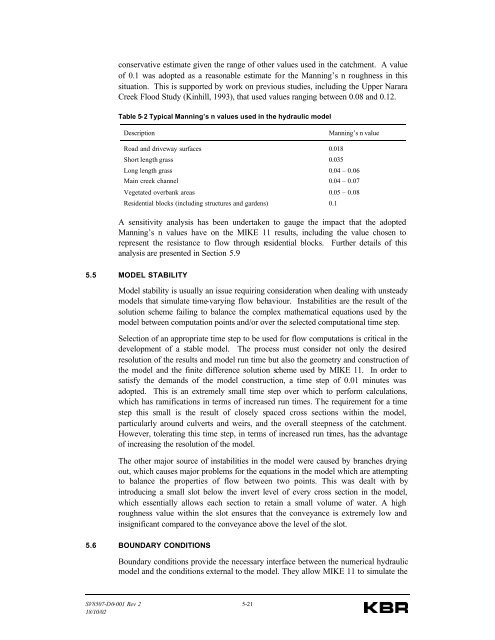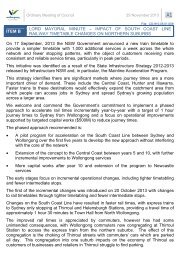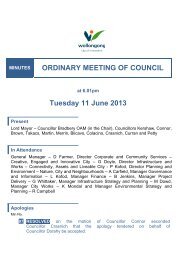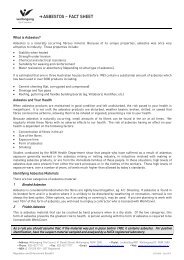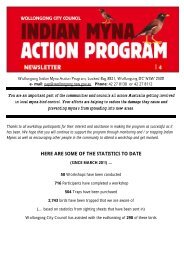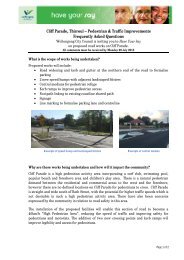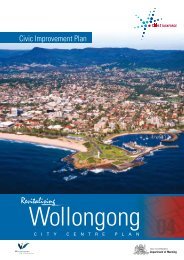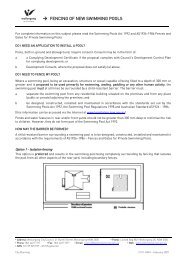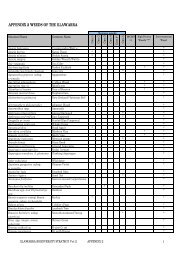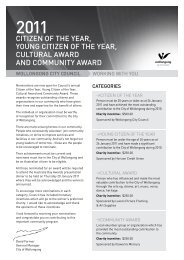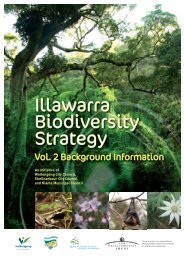Minnegang Creek Flood Study Report - Wollongong City Council
Minnegang Creek Flood Study Report - Wollongong City Council
Minnegang Creek Flood Study Report - Wollongong City Council
- No tags were found...
Create successful ePaper yourself
Turn your PDF publications into a flip-book with our unique Google optimized e-Paper software.
conservative estimate given the range of other values used in the catchment. A valueof 0.1 was adopted as a reasonable estimate for the Manning’s n roughness in thissituation. This is supported by work on previous studies, including the Upper Narara<strong>Creek</strong> <strong>Flood</strong> <strong>Study</strong> (Kinhill, 1993), that used values ranging between 0.08 and 0.12.Table 5-2 Typical Manning’s n values used in the hydraulic modelDescriptionManning’s n valueRoad and driveway surfaces 0.018Short length grass 0.035Long length grass 0.04 – 0.06Main creek channel 0.04 – 0.07Vegetated overbank areas 0.05 – 0.08Residential blocks (including structures and gardens) 0.1A sensitivity analysis has been undertaken to gauge the impact that the adoptedManning’s n values have on the MIKE 11 results, including the value chosen torepresent the resistance to flow through residential blocks. Further details of thisanalysis are presented in Section 5.95.5 MODEL STABILITYModel stability is usually an issue requiring consideration when dealing with unsteadymodels that simulate time-varying flow behaviour. Instabilities are the result of thesolution scheme failing to balance the complex mathematical equations used by themodel between computation points and/or over the selected computational time step.Selection of an appropriate time step to be used for flow computations is critical in thedevelopment of a stable model. The process must consider not only the desiredresolution of the results and model run time but also the geometry and construction ofthe model and the finite difference solution scheme used by MIKE 11. In order tosatisfy the demands of the model construction, a time step of 0.01 minutes wasadopted. This is an extremely small time step over which to perform calculations,which has ramifications in terms of increased run times. The requirement for a timestep this small is the result of closely spaced cross sections within the model,particularly around culverts and weirs, and the overall steepness of the catchment.However, tolerating this time step, in terms of increased run times, has the advantageof increasing the resolution of the model.The other major source of instabilities in the model were caused by branches dryingout, which causes major problems for the equations in the model which are attemptingto balance the properties of flow between two points. This was dealt with byintroducing a small slot below the invert level of every cross section in the model,which essentially allows each section to retain a small volume of water. A highroughness value within the slot ensures that the conveyance is extremely low andinsignificant compared to the conveyance above the level of the slot.5.6 BOUNDARY CONDITIONSBoundary conditions provide the necessary interface between the numerical hydraulicmodel and the conditions external to the model. They allow MIKE 11 to simulate theSV8507-D0-001 Rev 2 5-2118/10/02


